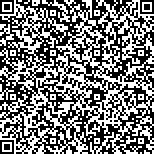下载中心
优秀审稿专家
优秀论文
相关链接
首页 > , Vol. , Issue () : -
摘要

嫦娥四号是人类历史上首个成功软着陆于月球背面的探测器,着陆点所在的冯卡门撞击坑位于月球最大的撞击结构(南极-艾特肯盆地)的东北部。嫦娥四号的科学探测活动将为分析月球背面的形成与演化提供宝贵的科研数据。本文结合玉兔二号巡视器搭载的测月雷达、轨道器光学及多光谱数据和最新的月球地质图对冯卡门撞击坑浅表层结构、矿物成分的空间分布及物质来源进行了深入分析。结果显示,冯卡门撞击坑的浅层结构主要由月壤层、溅射物层、古月壤层和基岩层所构成,其中月壤层物质成分存在较大差异,主要可以分为原生物质(撞击坑南部和西部)、外来溅射物(撞击坑的东部及北部泰山区域)及深层物质(织女撞击坑周围)三类。冯卡门撞击坑东部区域受外来溅射物影响较大,这些物质主要来自于东南方向的冯卡门L撞击坑及东北方向的芬森撞击坑。
Chang’E-4 is the first detector that successfully landed in the Von Kármán crater on the lunar farside and released the Yutu-2 rover for in-situ scientific detection. The landing site is located in the northeastern part of the South Pole-Aitken Basin, the largest impact structure of the moon, and scientific datasets obtained from the Yutu-2 rover may provide valuable clues to the formation and evolution of the lunar farside. Subsurface structures and material compositions concealed beneath the lunar surface hold valuable insights into geological history, even as meteoritic impacts and solar weathering erase surface traces. We integrate in-situ lunar penetrating radar, orbiter optical and multispectral data, and geological map to analyze the subsurface structure, mineralogical composition and material sources of the shallow material in Von Kármán crater. For craters with diameter in 100-meter size, scientists usually determine whether the impact penetrated the regolith layer based on the presence of dark-coloured bedrock material in the crater ejecta. Therefore, we hypothesise that bright craters with small diameters may not penetrate the regolith layer. Based on Crater Helper Tools for ArcMap, we identified 2495 bright craters and derived the iron oxide content, optical maturity index and the relative abundances of plagioclase, clinopyroxene, orthopyroxene and olivine at crater centers. Based on the 2495 mineral sample points obtained at different depths, the mineral composition variations at different depths were analysed by 3D spatial interpolation using 3D Empirical Bayesian kriging. Spatial point patterns of bright craters are also used to analyse crater densities, proximity distances and relative positional relationships to infer ejecta source directions. These results show that the subsurface structure can be divided into a four-layer structure consisting of regolith layer, ejecta layer, paleo-regolith layer and basalt layer. The shallow material in the Von Kármán crater is mainly divided into endogenous material, ejecta material and deeper materials (around the Zhinyu crater). Endogenous materials are predominantly found in the southern and western parts of the Von Karmen crater, with high abundances of orthopyroxene, olivine and iron oxides. Ejecta materials are mainly located in the southeastern, northeastern and Mons Tai and are characterised by an enrichment of clinopyroxene and plagioclase, with the southeastern ejecta being plagioclase-rich and the northeastern ejecta being clinopyroxene-rich. Deeper materials are dominated by materials excavated during the formation of the Zhinyu crater, with high contents of orthopyroxene, olivine and iron oxides. The eastern part of the Von Karmen crater is heavily affected by ejecta materials, which mainly come from the Von Kármán L crater to the southeast and the Finsen crater to the northeast. The Chang’E-4 landing area is located in the overlapping area of different ejectas, and the surface material is successively covered by the Fensen ejecta and the Zhinyu ejecta.

